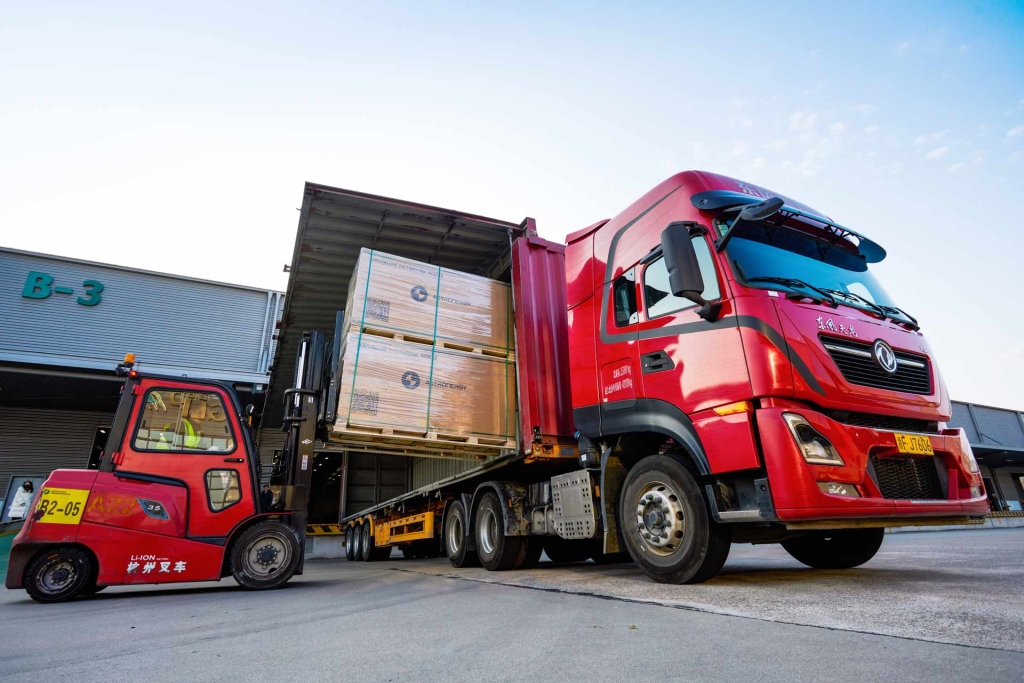


Astronergy, through its One-Stop Service, addresses a crucial topic for the success of photovoltaic projects: the proper unloading of solar modules. Improper handling during transportation or unloading can damage the modules, compromising the system’s efficiency and durability – a constant challenge for installers and EPC companies.
Astronergy’s modules, known for their quality and high efficiency, have a robust structure composed of a frame, special glass, solar cells, protective layers, and, in the case of dual-glass models, an additional layer of glass replacing the back sheet. These structural details highlight the need for careful handling to avoid problems during installation and operation.
Best Practices for Unloading and Stacking
The One-Stop Service recommends using appropriate equipment for the process: cranes for transversal unloading and forklifts for longitudinal movement, especially when pallets are stacked. Additionally, operations should take place on firm, level ground, avoiding adverse weather conditions such as strong winds, rain,or snow.
For transportation and storage, Astronergy advises against stacking more than two pallets and ensures that the modules are organized in a stable and secure manner. After unpacking, up to 14 modules can be stacked per pile, always respecting the glass orientation and handling the components carefully.
Specialized Support with the One-Stop Service
Aware of the challenges these steps present, Astronergy provides the One-Stop Service, a comprehensive after-sales service that supports clients at every stage of the project – from transportation and unloading to installation and maintenance. “Astronergy’s goal is to ensure each module is handled with the necessary care to maximize system performance and longevity,” stated a company representative.
In the next episode of this series, Astronergy will provide further detailed guidance on the installation processes for photovoltaic modules. To learn more about the One-Stop Service, contact the company’s sales team.
